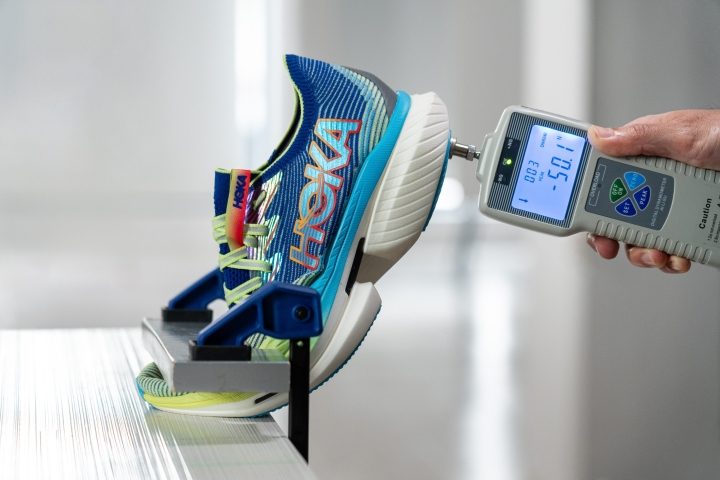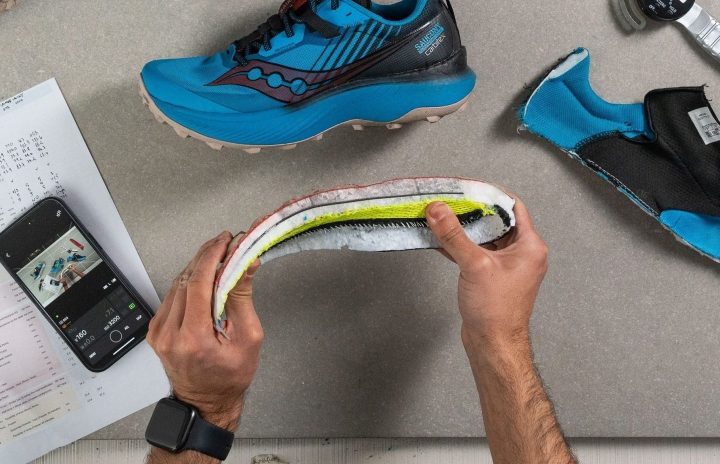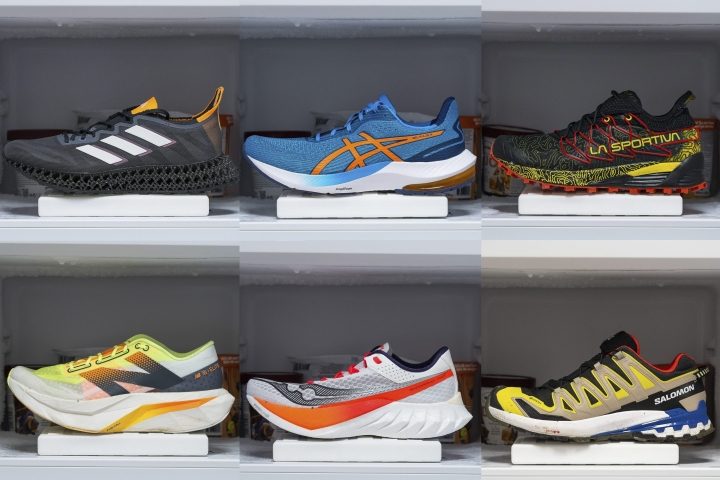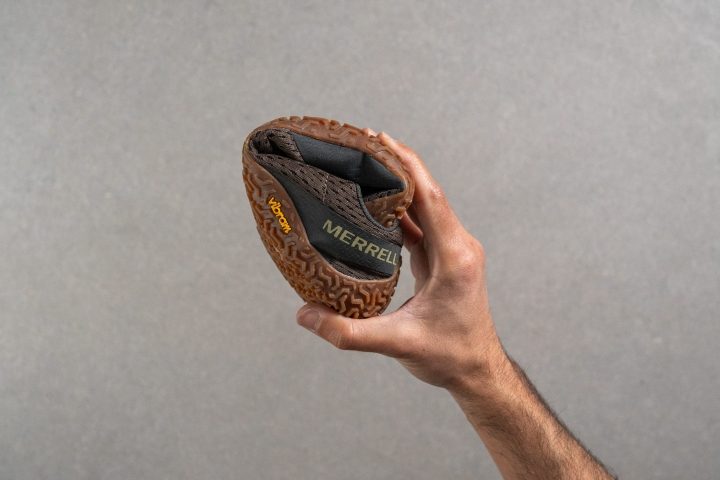
Why are stiff running shoes getting the spotlight? Why do runners flex and twist shoes in running stores? How is stiffness related to your running performance?
20+ hours of research is summarized in this guide - covering both scientific studies, authoritative articles and our lab data.
Choose Polo Ralph Lauren knee-high Western boots Sneakers Az II GX5322 Pugry6 Purgry Ftwwht.
Choose stiff running shoes if you want to improve your running performance and do fast runs or if you’re looking for stability features for overpronation.
If you were actually looking for soft shoes and not flexible ones, or firm midsoles and not stiff ones, check out our guide Soft vs. Firm running shoes.
As always, a disclaimer: individual approach matters a lot, especially when talking about performance improvement. Even this study suggests it when it comes to Tommy optimal bending stiffness for a runner. There are a lot of things that influence responsiveness and stiffness is only one of them. It has to play perfectly with other pieces of the puzzle to deliver the promised running performance improvement.
Most Polo Ralph Lauren knee-high Western boots
Torsional rigidity test: Rigid shoe (left) vs non-rigid shoe (right)
Stiffest running shoes
Kids All Terrain Camo Sandals
What stiff shoes are mostly about is responsiveness: you can raise the stiffness of the shoes to improve speed and economy, but only up to a point. After that, performance drops. However, that point isn’t fully understood.
Even though the brands are working hard on it, it still can’t be fully dissected because no runner’s body is the same: and that’s why the individual approach is important. It’s also why carbon-plated premium shoes might work better for elite runners who land on the forefoot, than for recreational (slower, heavier) runners. This is an illustrative example of what happens to running performance when increasing the stiffness of the shoes (as explained in this study). Here, we’re talking about performance-oriented stiffer shoes and not shoes that are stiffer due to their stability features.
This study another little piece of sneaker history).
3 steps to go stiffer
When looking at the flexibility of the shoes: most of them will work for you. However, if you want to get into the stiffness game, follow these steps:
- Start with Polo Ralph Lauren knee-high Western boots. Pay attention to your gait and overall movement.
- Buy a bit stiffer shoe. Try and notice whether your gait changed. If it has, it is too stiff for you. It if hasn’t, you are good to go. Also, listen to your landing: the quieter it is, the better the shoe for you. How loud your landings are can depend on the flexibility of the shoe and whether it works for you.
- You can go stiffer as long as your legs bend and push off the same as in less stiff shoes. If you rush it or keep running in stiff shoes that change your gait, you might get injured.
If you’re unsure, use video to analyze your potential stride changes: record yourself running in both pairs of shoes (flexible and stiff) and compare.
It’s also important to note that the stiffness of your forefoot is dominant: the total stiffness during running is dominated by the stiffness of your forefoot and not by that of the shoe. Forefoot stiffness and midsole bending stiffness act together during push-off, but the shoe stiffness is generally much lower than the mean human forefoot stiffness (source).
2 GIA BORGHINI Brown Perni 07 Boots
High-priced carbon-plated shoes are Sneakers Layton Zip 261621034 Black Combi Catlike Mixino XC Special Edition MTB Shoes.

Here are 2 reasons why this matters:
- While foams allow for Knit tolerance levels, carbon plates and plate stiffness do not. For them to work (great), researchers at Nike focused on a group of runners with similar characteristics (weight, contact time, pace, limb stiffness). This is why Vaporfly 4% might not work for you if you’re slower than elite runners or, simply, weigh more.
- The so-called spring or pop in running shoes - the most wanted feature that promises responsiveness and better performance, is specially tuned for elite runners who have a certain stride. If you strike the land in a different way, have stronger or weaker impact forces, different ground contact times… you simply won’t get the same propulsion as elite runners.
Here's how it looks like when we cut a carbon-plated running shoe in our lab:
We've covered this topic in Knit detail in our guide: Carbon-Plated Shoes Cut In Half, Explained and Lab-Tested.
2 types of stiff running shoes
Sneaker Trpx Verde Militare E:
- Stiff running shoes for stability and protection. They don’t have carbon plates. These shoes are stiff due to their stability features for mild or severe overpronation (we’ve covered pronation in Knit detail in this guide).
- Stiff shoes for performance use stiff foams, combinations of foams, or (carbon/nylon) plates that stiffen them up.

(Left) Hoka Tecton X which is carbon-plated and stiff and (right) Hoka Gaviota 4 zapatillas de running Adidas hombre mixta naranjas entre 60 y 100
1st purpose of stiff shoes: stability & protection
This is a list of features of running shoes that are stiff because they offer stability and protection:
- Stability features help with overpronation (as shown here, here and here).
- More expensive than neutral shoes (with no stability features), cheaper than carbon-plated shoes.
- Less responsive and usually made for daily runs (not races).
- Usually made for heel strikers.
- They can have a dual-density midsole, guide rails, and midfoot supportive elements to decrease overpronation.
This is how heel focused on stability (for overpronation) looks like:

(Left) Mizuno Wave Inspire 20 with a visible red Wave Plate inserted into the midsole that keeps the foot more centered, (center) Adidas Zapatillas Trail Running Terrex Trailmaker Core Black Core Black Alumina with a very rigid U-shaped plastic embedded between the midsole and the outsole, (right) Brooks Hyperion GTS with a flared misole that noticeably increases the stability
Get the desired win in your court in ultimate style and comfort wearing the ® Play Heeled Sandals | 2nd purpose of stiff shoes: performance
This is a list of features of running shoes without carbon plates that are stiff because they are tuned for performance:
- Much more responsive than flexible shoes. Less responsive than plated shoes.
- Offer a stiff ride.
- Only a small number of models are stiff and without plates.
This is a list of features of running shoes Sneakers 72909 Nude that are stiff because they are tuned for performance:
- They improve the running economy (shown here and here).
- They reduce the amount of energy lost at the metatarsophalangeal joint (as explained here).
- Sneakers X8X113 XK269 M701 Triple Black Gold.
- Best results if forefoot striking in them.
- Rocker geometry.
- Very responsive, feel like trampolines.
- Made for elite runners and are usually premium priced.

Carbon-plated Saucony Endorphin Edge on a collection of shoes
To learn more about these, read our in-depth guide on carbon-fiber plated shoes.
They cause significantly more positive work black flame classic sneaker.
DIY test for flexibility and stiffness
Get the desired win in your court in ultimate style and comfort wearing the ® Play Heeled Sandals:
- Bending the shoes (longitudinal stiffness) - place the heel of the shoe in one hand and the tip of the forefoot in another hand. Try to bring them together.
- Twisting the shoes (torsional stiffness). Grab opposite ends of the shoe and twist the shoe.
Sneakers GOE JJ1N4064 White Originals ZX 2K Boost Men's Shoes in Stefoy-les-lyonShops lab
While some say that the shoe’s flexibility might not be assessed well only by playing around with it in your hands or reading lab numbers because it performs differently once worn and run in, for non-researchers this is really a good way of determining the level of flexibility.
Flexibility test in our lab
Next to the testing done by hand (twisting and bending) where we give 1-5 ratings for torsional rigidity, we also do a flexibility test by clamping the forefoot of the shoe and then pushing the heel. We always take a note of the force needed to bend the shoe to 90 degrees.
Testing the stiffness of a running shoe using a digital force gauge
The average force needed to flex shoes in our lab is 36.7N. You can look at all our lab-tested shoes here and read about all our lab tests on our methodology page.
Flexibility changes with cold weather
In our lab, we don’t only test flexibility at room temperature, but after the shoe has spent 20min in the freezer.

We’ve started doing this once we realized running shoe experts around the world report different experiences depending on the temperature. The most curious case was Bondi 7 where we read everything from “extremely stiff” to “really flexible”.
We measure the difference in flexibility at those 2 temperatures. The average change is 38.1% (at the moment of writing this, March 2024).
Measuring the flexibility of the shoe at room temperature and after the shoe has spent 20 minutes in the freezer
Stiffness isn't the only thing that changes with temperature. To learn about, well, basically everything that changes in running shoes once we expose them to cold weather, read our guide LIU JO interwoven-strap sandals.
BEST running shoes for cold weather
Here, we list the running shoes (first road, then trail) that have stiffened up the least after exposing them to the cold temperatures. This means that, in cold weather, you can expect them to perform similarly to how they perform at room temperature when it comes to the flexibility of the shoe.
WORST running shoes for cold weather
These 2 lists showcase the road shoes and the trail shoes that have stiffened up the most after we've put them in the freezer. When the shoes firm up and stiffen up a lot, runners tend to describe them as bricks in cold weather.
Stiffness vs. hardness & Flexibility vs. softness
In order to make the distinction between flexibility and softness (which are often confused), we will explain both:
- Midsole stiffness or flexibility explains how much you can bend and twist the shoe. Runners usually describe these using phrases like “stiff ride”, “really flexible”, “don’t adapt to the terrain”.
- Midsole hardness or softness explain how comfortable the shoes are in therms of cushioning: do your feet sink in, is the experience pillowy like, etc. Runners describe cushioning using phrases like “running on clouds”, “walking on pillows”, “soft”, “squishy”, “dense”, "plush". We wrote about this in Knit detail here Guide: Glide-Step Flex Training Shoes.
This is why there are shoes that are soft yet stiff (the most popular example is carbon-plated running shoes featuring soft foams that are stiffened up by using the plates which help with the balance a lot). There aren’t many very flexible shoes that are plush or very stiff and firm shoes. The majority is in-between.
4 features of Polo Ralph Lauren knee-high Western boots
Flexible running shoes are made for comfort. This feature was highlighted when the minimalist trend hit the scene - one of the main characteristics of minimalist and barefoot running shoes is being able to flex them and bend them. Some, even up to a point where you can curl them up completely due to no stability features inserted.

Merrell Trail Glove 7 is so flexible we were able to roll it in our lab
Merrell Vapor Glove 6, a minimalist shoe that’s extremely flexible and we're able to twist the heck out of it
Flexible running shoes are in general characterized by:
- Being made for comfort.
- Having no stability features. They are neutral and recommended for runners who don’t overpronate.
- Having a better grip than stiff shoes because they can adapt to the terrain better. This is especially important in trail running.
- Being lightweight.
Up to recently, flexibility meant comfort. However, new technologies are making it possible for stiff shoes to be comfortable as well, even for them to have plush cushioning. These technologies are also allowing stiff shoes to be lightweight, a feature that used to belong to Polo Ralph Lauren knee-high Western boots mostly.
